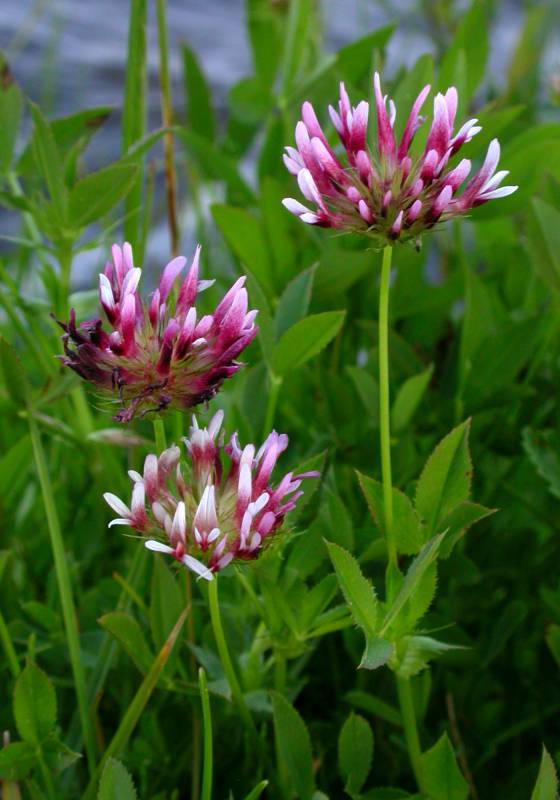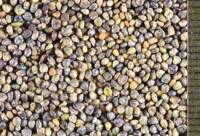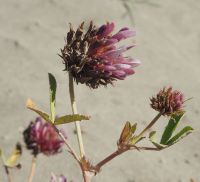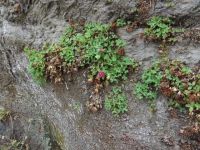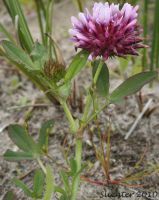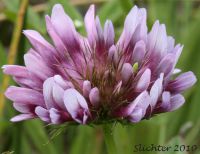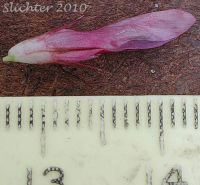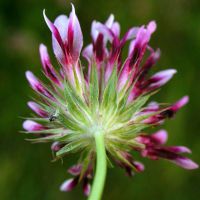Distribution: Occurring chiefly west of the Cascades crest in Washington; Alaska to California, east to Idaho, Colorado, and New Mexico.
Habitat: Costal dunes to moist meadows and stream banks at low to moderate elevations in the mountains.
Flowers: May-September
Origin: Native
Growth Duration: Annual, Perennial
Conservation Status: Not of concern
Pollination: Bumblebees, bees, butterflies, flies
Glabrous, tap-rooted perennial, decumbent-based and often rhizomatous, stems 1-8 dm. long.
Leaves trifoliate, long-petiolate; leaflets linear-elliptic to oblong-obovate, 1-3 cm. long, finely serrulate; stipules 1-4 cm. long, lacerate-margined and acuminate.
Inflorescence of 2- to 60-flowered, involucrate heads 2-3 cm. broad on axillary peduncles; involucre flared, saucer-shaped, from 2 cm. broad and lacerately 8- to 12-lobed, to shallowly lobed, the lobes entire; calyx glabrous, about 2/3 as long as the corolla, the tube 10-veined, the 5 teeth lanceolate and needle-tipped, equal to each other and the tube; corolla pea-like,10-18 mm. long, erect or spreading, reddish to purple, often white-tipped.
Pod 1-4 seeded.
Publication: Sem. Hort. Bot. Hamburg. 17. 1825.
Trifolium fendleri Greene
Trifolium fimbriatum Lindl.
Trifolium heterodon Torr. & A. Gray
Trifolium involucratum Ortega var. fendleri (Greene) McDermott
Trifolium involucratum Ortega var. fimbriatum (Lindl.) McDermott
Trifolium involucratum Ortega var. heterodon (Torr. & A. Gray) S. Watson
Trifolium involucratum Ortega var. kennedianum McDermott
Trifolium kennedianum (McDermott) A. Nelson & J.F. Macbr.
Trifolium spinulosum Douglas ex Hook.
Trifolium willdenowii Spreng. var. fimbriatum (Lindl.) Ewan, orthographic variant
Trifolium willdenowii Spreng. var. kennedianum (McDermott) Ewan, orthographic variant
Trifolium wormskioldii Lehm. var. fimbriatum (Lindl.) Jeps.
Trifolium wormskioldii Lehm. var. kennedianum (McDermott) Jeps.
Trifolium wormskjoldii Lehm., orthographic variant [HC]
PNW Herbaria: Specimen records of Trifolium wormskioldii in the Consortium of Pacific Northwest Herbaria database
WA Flora Checklist: Trifolium wormskioldii checklist entry
OregonFlora: Trifolium wormskioldii information
E-Flora BC: Trifolium wormskioldii atlas page
CalPhotos: Trifolium wormskioldii photos


